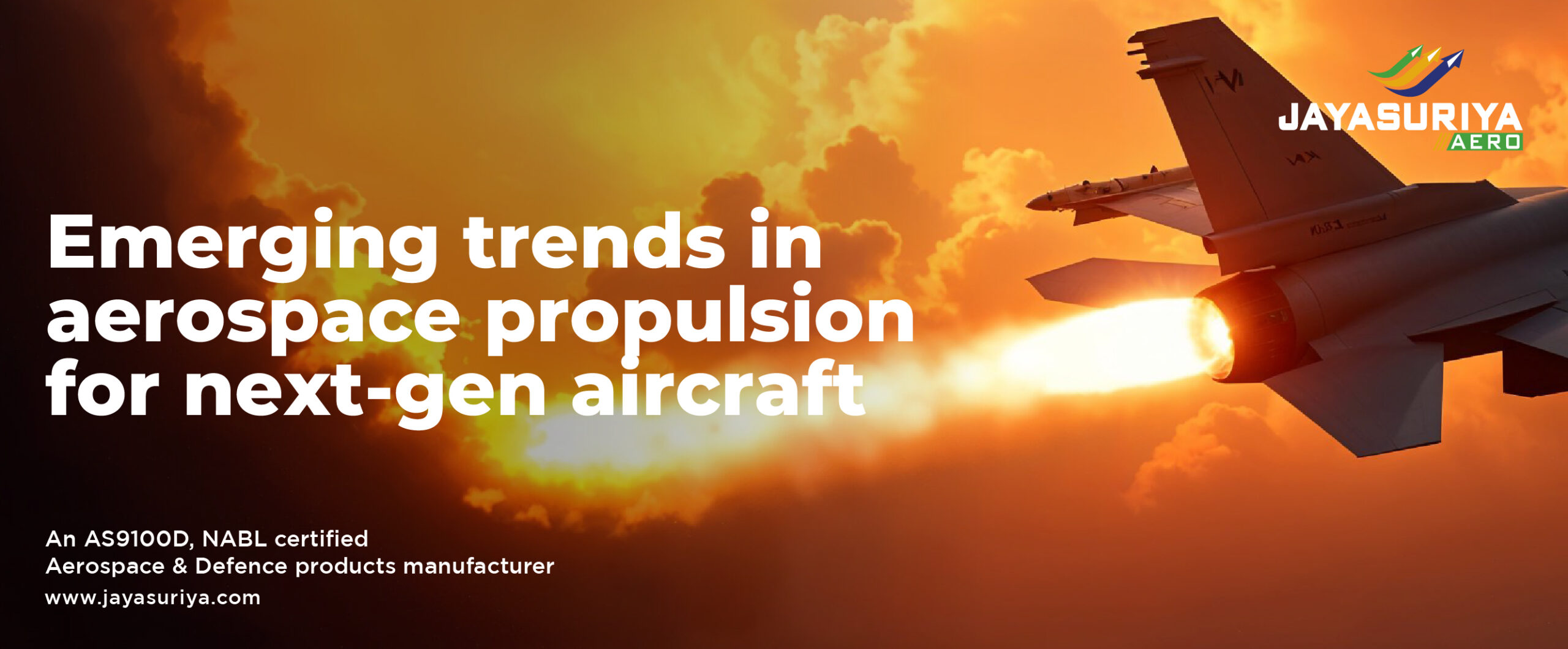The aerospace industry is experiencing a transformative era that is driven by the pursuit of efficiency, sustainability, and technological advancement. Central to this evolution are innovations in propulsion systems, which are redefining the capabilities and environmental footprint of next-generation aircraft. This article explores the emerging trends in aerospace propulsion that are shaping the future of aviation.
1. Sustainable Aviation Fuels (SAFs)
Overview: SAFs are non-conventional fuels derived from renewable resources, such as plant materials, waste oils, and even algae. They are designed to be compatible with existing aircraft engines, offering a drop-in solution to reduce carbon emissions.
Advancements:
- Feedstock Diversification: Research is expanding the range of sustainable feedstocks, including municipal solid waste and industrial off-gases, to produce SAFs, enhancing scalability and sustainability.
- Production Technologies: Innovations in Fischer-Tropsch synthesis and hydroprocessed esters and fatty acids (HEFA) processes are improving the efficiency and cost-effectiveness of SAF production.
Impact: Widespread adoption of SAFs could reduce lifecycle greenhouse gas emissions by up to 80% compared to traditional jet fuels, significantly mitigating aviation’s environmental impact.
2. Electrification of Propulsion Systems
Overview: Electric propulsion involves using electric motors powered by batteries or fuel cells to drive aircraft. This technology promises quieter operations and reduced emissions.
Advancements:
- Battery Technology: Developments in energy density and weight reduction are making batteries more viable for aviation applications, enabling longer flight ranges.
- Hybrid-Electric Systems: Combining traditional engines with electric motors allows for optimized fuel consumption and reduced emissions during different flight phases.
Impact: Electric and hybrid-electric propulsion systems are particularly promising for regional and short-haul flights, offering the potential for zero-emission operations.
3. Hydrogen-Powered Engines
Overview: Hydrogen, as a clean energy carrier, can be used in combustion engines or fuel cells to produce electricity, emitting only water vapor.
Advancements:
- Combustion Turbines: Modifying gas turbines to burn hydrogen efficiently and safely is a key research area, aiming to leverage existing engine architectures.
- Fuel Cell Integration: Hydrogen fuel cells convert chemical energy directly into electricity, offering a highly efficient and emission-free power source for electric motors.
Impact: Hydrogen propulsion has the potential to eliminate carbon emissions from aviation, though challenges remain in production, storage, and distribution infrastructure.
4. Open Rotor (Propfan) Engines
Overview: Open rotor engines, or propfans, feature unshrouded fan blades, combining the efficiency of turboprops with the speed of turbofans.
Advancements:
- CFM International RISE Program: This initiative is developing an open fan engine aiming for a 20% reduction in fuel consumption and CO₂ emissions compared to current engines. The design supports both hydrogen and sustainable aviation fuels.
Impact: Open rotor engines could significantly enhance fuel efficiency for commercial aircraft, though considerations around noise and integration are ongoing.
5. Blended-Wing-Body (BWB) Designs
Overview: BWB aircraft integrate the wings and fuselage into a single structure, reducing aerodynamic drag and improving fuel efficiency.
Advancements:
- JetZero’s Z4 Aircraft: In collaboration with Delta Air Lines, JetZero is developing the Z4, a BWB aircraft designed to be up to 50% more fuel-efficient than current planes, aiming for net-zero carbon emissions by 2050.
Impact: BWB designs offer substantial improvements in fuel efficiency and payload capacity, potentially revolutionizing commercial aviation.
6. Supersonic and Hypersonic Propulsion
Overview: Advancements in propulsion technologies are enabling aircraft to travel at speeds exceeding the speed of sound, reducing travel times significantly.
Advancements:
- Hypersonic Jets: Companies like Venus Aerospace are developing hypersonic jets capable of reaching speeds up to Mach 6, potentially reducing flight times between New York and London to just one hour.
Impact: Supersonic and hypersonic travel could revolutionize long-haul flights, though challenges related to noise, emissions, and regulatory approvals remain.
7. Advanced Materials and Manufacturing Techniques
Overview: The development of new materials and manufacturing processes is critical to supporting next-gen propulsion systems.
Advancements:
- Additive Manufacturing: Also known as 3D printing, this technology allows for the production of complex engine components with reduced weight and improved performance.
- Smart Materials: Materials that can adapt to environmental changes, such as temperature or pressure variations, are being integrated into engine designs to enhance efficiency and safety.
Impact: These innovations contribute to lighter, more efficient, and cost-effective propulsion systems, supporting the overall sustainability goals of the aerospace industry.
8. Autonomous Flight and Artificial Intelligence (AI)
Overview: The integration of AI and autonomous systems is transforming aircraft operations, including propulsion management.
Advancements:
- Predictive Maintenance: AI algorithms analyze engine performance data to predict potential failures, optimizing maintenance schedules and reducing downtime.
- Autonomous Flight Control: Advanced control systems can adjust engine parameters in real-time for optimal performance, enhancing fuel efficiency and safety.
Impact: AI-driven propulsion management leads to more efficient operations, reduced operational costs, and enhanced safety in aviation.
Conclusion
The evolution of aerospace propulsion is central to the future of aviation, with emerging technologies promising to enhance efficiency, reduce environmental impact, and transform the passenger experience. Innovations such as sustainable aviation fuels, electric and hydrogen propulsion, open rotor engines, and advanced materials are at the forefront of this transformation.
As the industry moves toward more sustainable and high-performance solutions, the role of precision-engineered components becomes increasingly critical. Advanced aeronautic fasteners and aerospace-grade materials are essential for ensuring the reliability and efficiency of next-generation propulsion systems.
At Jayasuriya Aero, we are committed to supporting these advancements by providing high-quality aeronautic fasteners and precision components that meet the rigorous demands of modern aerospace engineering. Explore our range of innovative solutions designed to enhance the performance and durability of cutting-edge propulsion systems.

